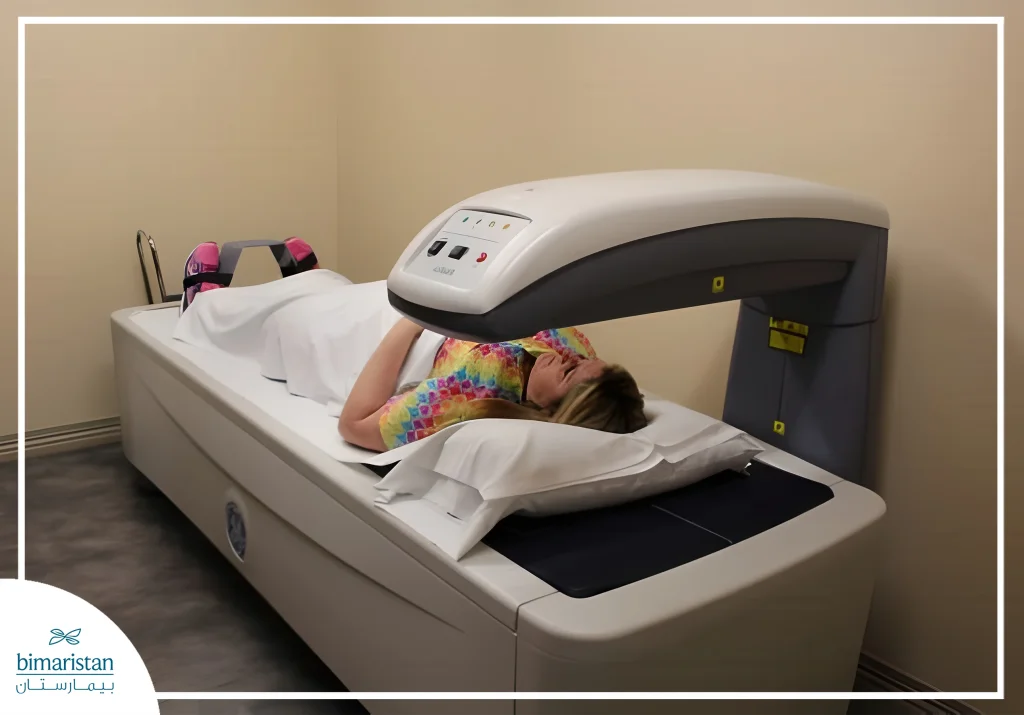Osteoporosis after menopause is a major health challenge for women, due to low levels of estrogen, a hormone that plays a key role in maintaining bone density. This decrease leads to weakened bones and an increased risk of fractures. Early awareness and diagnosis of osteoporosis after menopause increase the chances of prevention and minimize the health complications associated with this condition.
What does osteoporosis have to do with menopause?
As menopause approaches, bone density begins to gradually decline due to the decrease in estrogen, statistics show that women can lose up to 10% of their bone density in the first five years after menopause, and it is estimated that one in two women over the age of 60 will experience at least one fracture as a result of osteoporosis.
Causes of osteoporosis after menopause
Low estrogen may not be the only risk factor for osteoporosis. Osteoporosis after menopause is a disease that is influenced by many other factors, including
- Ethnicity: Caucasian and Asian women are more likely to develop it.
- Bone structure and body weight: Thin and fat women can have a higher risk of developing osteoporosis.
- Family history: If a family member has osteoporosis, it may increase your risk.
- Some medications: Long-term steroids, for example, can increase your risk.
- Certain medical conditions: Such as cancer and stroke, increase the risk of osteoporosis.
- Previous history of fractures
Symptoms of osteoporosis after menopause
Osteoporosis after menopause is known as the silent disease, as it may not show any obvious symptoms in the early stages, and with the passage of time and the deterioration of bone density, signs begin to appear gradually, and the first indications may be a sudden fracture without a clear cause, the most prominent symptoms include the following:
- Chronic back pain: One of the most common symptoms of osteoporosis after menopause, often caused by small compression fractures in the vertebrae of the spine, the pain may be constant or appear when standing for long periods of time or lifting light objects.
- Gradual shortening of stature: With repeated small fractures of the vertebrae, the spine begins to lose some of its length, leading to a visible decrease in height by several centimeters over time.
- Increased susceptibility to fractures: Even minor injuries, such as a minor fall or slip, can cause serious fractures in fragile bones, especially in areas such as the hip, spine, and wrist. These fractures are often painful and require surgical intervention.
- A change in posture or curvature of the back: Due to the loss of vertebral support, you may notice a gradual curvature in the upper back, which affects balance and walking, and may increase the risk of falling.
In some cases, these symptoms may be accompanied by indirect signs such as a weak grip, general fatigue, or difficulty in daily movement due to chronic pain and fear of fractures.
The importance of preventive health screenings for osteoporosis after menopause
Since osteoporosis after menopause often has no early symptoms, regular health checks are essential to monitor bone density and detect signs of bone loss early. Early detection allows for timely interventions that can prevent fractures.
- Blood tests: Calcium, phosphorus, vitamin D, TSH, and parathyroid hormones.
- X-ray: Detects issues such as fractures, abnormal bone positions, or bone disease.
- A bone density test (DEXA): The most important test for diagnosing osteoporosis, it measures bone mineral density, especially in the hip and spine, and is recommended for all women after the age of 50, or earlier if there are risk factors.
- Body Composition Analyzer: In addition to body fat percentage, it measures lean mass (muscle, bone, organ, and water mass), which is important for overall musculoskeletal health.

Treatment options for osteoporosis after menopause
There are several treatment options for osteoporosis after menopause, including:
Pharmacological remedies
- Bisphosphonates: These are the most common drugs used to treat osteoporosis, such as alendronate and risedronate.
- Hormone replacement therapy: This therapy helps replace the estrogen hormone that decreases after menopause, which is important for maintaining bone health.
- New drugs such as denosumab or raloxifene
Nutritional therapy and supplements
- Boost your calcium and vitamin D intake: Calcium is the main component of bones, and vitamin D helps the body absorb calcium effectively.
- Diet: Vegetables provide vitamins and minerals essential for bone health, and protein is essential for building bone and muscle tissue.
Aerobics
- Resistance exercises: Help stimulate bone growth and strengthening, and increases the strength of surrounding muscles.
- Walking: It’s a simple and effective activity that improves bone density and promotes balance, reducing the risk of falls and fractures.
- Yoga: Helps improve flexibility, balance, and reduce stress, which is very important to avoid fall-related accidents.
Tips for preventing osteoporosis after menopause
There are many steps you can take to prevent osteoporosis, especially as women reach menopause, so following these tips can help keep your bones and muscles strong and minimize bone density loss or fractures:
- Regular check-ups to check bone health: Once a woman reaches menopause, it is recommended that she visit her doctor regularly to assess bone health and the risk of fractures.
- Exercise: Exercise is an effective way to strengthen bones and muscles and reduce the loss of bone density.
- Habits: Smoking and excessive alcohol consumption are known to contribute to bone loss.
- Adequate sun exposure: Exposure to sunlight helps the body produce vitamin D, which promotes calcium absorption and strengthens bones, reducing the risk of osteoporosis.
Osteoporosis after menopause is a common but manageable and preventable condition. Early detection and a healthy lifestyle can reduce the risk of fractures and preserve quality of life. Do not hesitate to visit your doctor if you experience any worrying symptoms or if you are exposed to risk factors that affect bone health.
Sources:
- Better Health Channel. (n.d.). Menopause and osteoporosis. Victorian Government
- Zhang, Y., Zeng, Y., Wang, M., Tian, Q., Xue, Y., & An, N. (2015). Primary osteoporosis in postmenopausal women. Chronic Diseases and Translational Medicine, 1(1), 9-13



